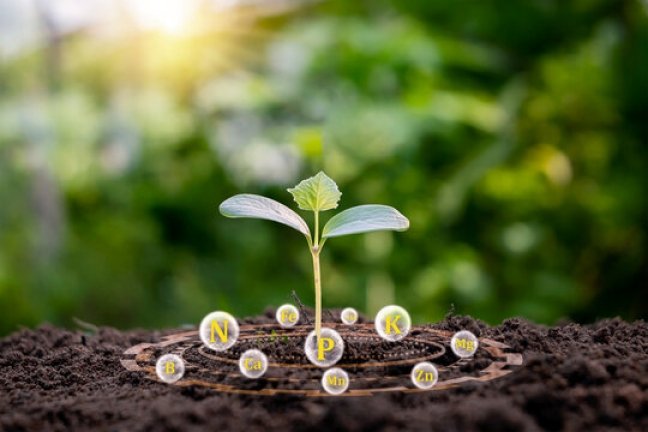What Is A Nitrogen Booster
A nitrogen booster, in gardening terms, is a special substance or fertilizer made to increase the amount of nitrogen in the soil. Nitrogen is really important for plants to grow well. It helps them make important things like proteins, enzymes, chlorophyll, and DNA.
Sometimes, the soil doesn’t have enough natural nitrogen, which can make plants grow slowly and not produce as much. This is where nitrogen boosters come in. They are made to give plants an extra bit of nitrogen, making sure they have enough of this important nutrient to thrive.
Nitrogen boosters can be either natural or man-made. Natural ones come from things like compost, manure, and certain plants. They slowly release nitrogen into the soil as they break down, giving plants a steady and eco-friendly source of this nutrient. Man-made nitrogen boosters are created chemicals designed to give plants a quicker and stronger supply of nitrogen.
Picking the right nitrogen booster for your garden depends on things like the kinds of plants you’re growing, the type of soil you have, and what your garden needs. It’s very important to use nitrogen boosters correctly so that plants get the right amount of nitrogen without getting too much, which can cause problems like pollution.
All in all, nitrogen boosters are a helpful tool for gardeners. They help make sure there’s enough of the right nutrients in the soil, which leads to healthier, stronger plants and better harvests.
Why Do Plants Need Nitrogen Booster?
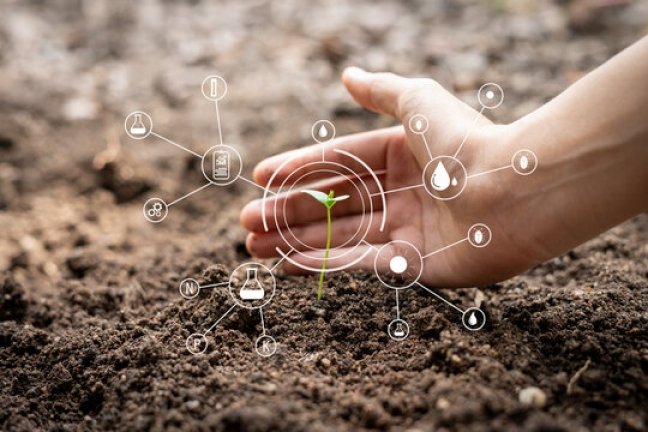
Plants need nitrogen for some very important reasons:
- Making Proteins: Nitrogen is a special part that helps make proteins, which are like the building blocks for plants. Proteins are really important for lots of things plants do, like growing, staying healthy, and protecting themselves.
- Creating Green Color (Chlorophyll): Nitrogen is a special ingredient in chlorophyll, which is the green stuff in plants that helps them use sunlight to make food. This food-making process is super important for giving plants energy.
- Helping Enzymes Work: Plants have special workers called enzymes that do lots of important jobs. Nitrogen helps these enzymes do their work, which keeps the plant healthy and growing.
- Building DNA and RNA: Nitrogen is like a part of the instructions that tell a plant how to grow and be itself. These instructions are in things called DNA and RNA.
- Making Vitamins and Hormones: Nitrogen helps make special things like vitamins and hormones in plants. These are like the plant’s special helpers that make sure it grows, flowers, and makes fruit.
- Moving energy Around: Nitrogen is like a helper that moves energy inside the plant. It’s like a delivery service for energy, making sure the plant has what it needs to grow and stay strong.
- Growing Well: When plants get enough nitrogen, they can grow big and healthy. They have good leaves and strong roots, which helps them stay tough and able to handle challenges.
- Making Friends with Helpful Bacteria: Some plants, like peas and beans, have special friends in the soil that help them get nitrogen. These friends take nitrogen from the air and give it to the plant, like a natural gift.
- Keeping a Good Balance: Nitrogen is one of the main things plants need to be healthy. It’s like a special ingredient in plant food, along with other important things like phosphorus and potassium.
- Handling Tough Times: When plants have enough nitrogen, they can handle tough situations like not enough water or when they get sick or have bugs bothering them.
Because nitrogen is so important for plants, it’s crucial to make sure they have enough. This is where nitrogen boosters come in handy. They’re like special helpers that give plants more nitrogen when they need it. This way, plants can grow strong and healthy.
How to Test Nitrogen of Soil
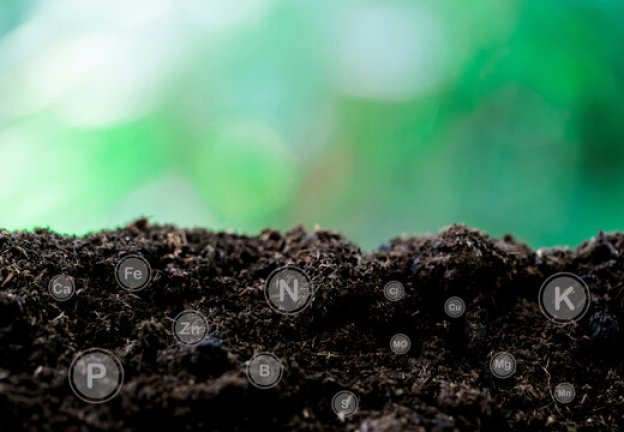
Checking how much nitrogen is in your soil is important to make sure plants can grow well. Here’s a simple guide on how to do it:
Things You’ll Need:
- Soil Testing Kit or Lab Services: You can get a soil testing kit from a gardening store or send a bit of soil to a special lab that checks it for you.
- Gloves and Safety Gear: Wear gloves and other safety stuff to keep your hands safe while you’re working with soil and chemicals.
- Clean Containers: Get some clean containers to put the soil in. Avoid using metal ones, as they can react with the soil.
- Trowel or Soil Probe: Use a trowel (like a small shovel) or a soil probe (a tool for digging) to get bits of soil from different depths.
Steps:
- Picking Sampling Spots: Choose a few spots in your garden or planting area. If some spots seem different from others, divide them into smaller sections.
- Getting Soil Samples: Use the trowel or probe to collect bits of soil from different spots in each area. For the best results, get samples from different depths, like from the surface and a bit deeper (about 4-6 inches).
- Mixing the Samples: Put all the samples from one area into a clean container and mix them really well.
- Drying the Soil: Spread the mixed soil out on a clean surface and let it dry in the air. Don’t use heat, because too much heat can change the nutrients in the soil.
- Using the Soil Testing Kit: If you have a soil testing kit, follow the instructions that come with it. Usually, this means adding some special stuff to a bit of the dried soil and watching for color changes.
- Sending Samples to a Lab: If you’re sending your samples to a lab, do what they tell you for packing and sending them. They’ll give you a detailed report about what’s in your soil.
- Understanding the Results: When you get your test results, pay close attention to the nitrogen levels. They’re usually measured in parts per million (ppm) or pounds per acre (lb/acre).
- Adjusting Nitrogen Levels: Based on the results, you can change your plan for adding nutrients. This might mean using things with lots of nitrogen in them or special fertilizers.
Important Tips:
- Do more tests regularly, especially before you plant anything new. This helps you see how the nutrient levels change over time.
- Follow the instructions that come with your testing kit or from the lab about what to do after you get the results.
- Keep a record of your soil test results so you can compare them later.
Following these steps will help you check how much nitrogen is in your soil and make good choices about nutrients for your plants.
How to Test Soil For Nitrogen Deficiencies:
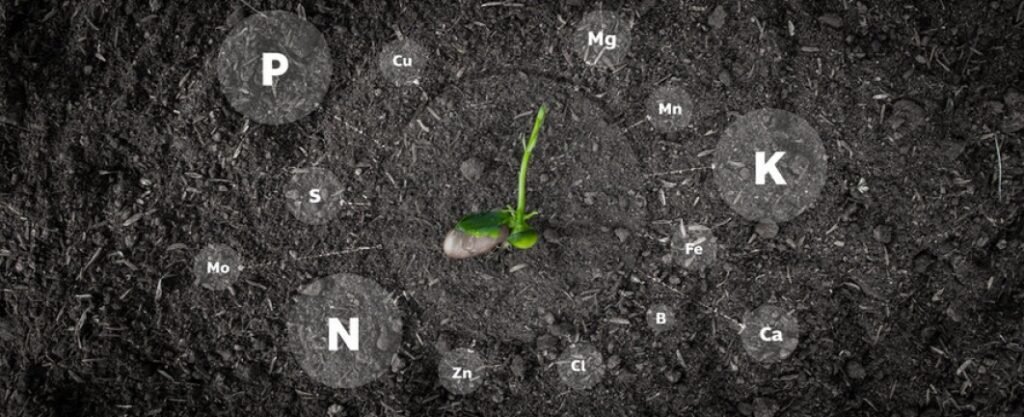
Checking if your soil has enough nitrogen for plants is really important to help them grow well. Here’s a simple guide on how to do it:
Things You’ll Need:
- Soil Testing Kit or Lab Services: You can get a soil testing kit from a gardening store or send a bit of soil to a special lab that checks it for you.
- Gloves and Safety Gear: Wear gloves and other safety stuff to keep your hands safe while you’re working with soil and chemicals.
- Clean Containers: Get some clean containers to put the soil in. Avoid using metal ones, as they can react with the soil.
- Trowel or Soil Probe: Use a trowel (like a small shovel) or a soil probe (a tool for digging) to get bits of soil from different depths.
Steps:
- Picking Sampling Spots: Choose a few spots in your garden or planting area. If some spots seem different from others, divide them into smaller sections.
- Getting Soil Samples: Use the trowel or probe to collect bits of soil from different spots in each area. For the best results, get samples from different depths, like from the surface and a bit deeper (about 4-6 inches).
- Mixing the Samples: Put all the samples from one area into a clean container and mix them together really well.
- Drying the Soil: Spread the mixed soil out on a clean surface and let it dry in the air. Use heat sparingly because too much heat can change the nutrients in the soil.
- Using the Soil Testing Kit: If you have a soil testing kit, follow the instructions that come with it. Usually, this means adding some special stuff to a bit of the dried soil and watching for color changes.
- Understanding the Results: When you get your test results, pay close attention to the nitrogen levels. They’re usually measured in parts per million (ppm) or pounds per acre (lb/acre).
- Looking at the Plants: Check the plants in the area for signs that they might not have enough nitrogen. This can include leaves that are pale or turning yellow, growth that seems slow, and plants that don’t look very strong.
- Adjusting Nitrogen Levels: Based on the results and what you see with the plants, you can change your plan for adding nutrients. This might mean using things with lots of nitrogen in them or special fertilizers.
Important Tips:
- Do more tests regularly, especially before you plant anything new. This helps you see how the nutrient levels change over time.
- Follow the instructions that come with your testing kit or from the lab about what to do after you get the results.
- Please keep a record of your soil test results so you can compare them later.
By following these steps, you can figure out if your soil doesn’t have enough nitrogen and take steps to help your plants grow well.
Signs Of A Nitrogen Booster Deficiency
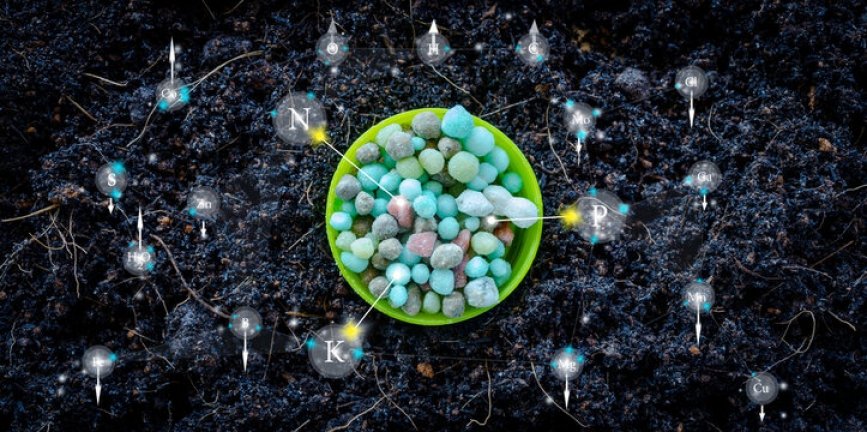
When a plant doesn’t have enough nitrogen, it shows some clear signs. Here are some things you might notice:
- Yellow Leaves on the Bottom: The older leaves, especially the lower ones, might turn pale or yellow. This happens because the plant moves the nitrogen to the newer leaves when it’s not enough.
- Slower Growth: Plants with enough nitrogen might grow faster. They might be smaller than they should be for their age.
- Smaller, Thinner Leaves: The leaves of plants with a nitrogen shortage might be smaller than usual, and they might look thin.
- Not Many Leaves: Not enough nitrogen can mean the plant doesn’t have a lot of leaves, so it might look a bit bare.
- Flowers and Fruits Take Longer: In flowering plants, not enough nitrogen can make it take longer for flowers and fruits to start growing. The plant uses its energy for important things instead of making flowers.
- Red or Purple Leaves: Some plants, like ones in the cabbage family, might get a reddish or purplish color on their leaves.
- Weak Stems: The stems of plants without enough nitrogen might not be very strong. They might bend or break easily.
- Overall Weakness: Plants that need more nitrogen might look weak and need to be more lively. They might get sick from bugs and diseases more easily.
- Starts in the Bottom Leaves: Usually, the first signs of not enough nitrogen show up in the older leaves at the bottom. Then, it moves up the plant.
- Leaves Lose Their Green Color: Sometimes, the leaves lose their green color because they can’t make enough of the stuff that makes them green. This often starts in the older leaves.
- Branches or the Whole Plant Might Die: If the plant doesn’t have enough nitrogen, parts of it might start to die, or even the whole thing.
Remember, these signs can sometimes look like other problems, so it’s a good idea to check the soil or the plant itself to be sure. To help a plant that needs more nitrogen, you can add fertilizers or organic stuff with lots of nitrogen. Just be careful not to use too much, because that can cause other problems.
When Should I Add Nitrogen Booster To My Garden?
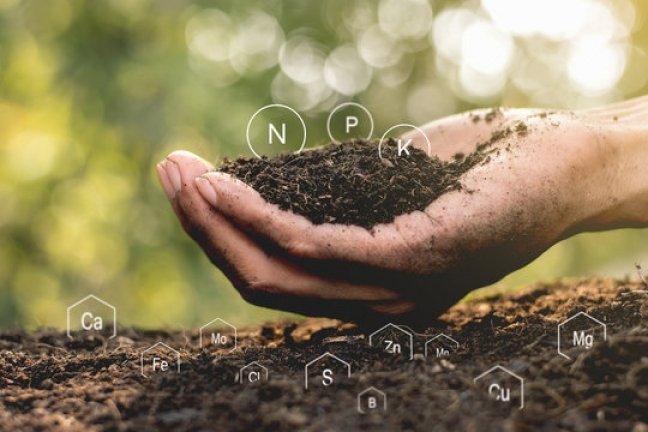
Making sure your plants get enough nitrogen is really important for their health. Here are some important times to think about adding nitrogen to your garden:
- When You’re Planting: Before you put your plants in the ground, mix in fertilizers or organic stuff with lots of nitrogen. This gives the young plants a good start to grow strong roots.
- When Plants Are Growing Fast: Plants need the most nutrients when they’re growing quickly. This is usually in the spring and early summer, depending on where you live and what you’re growing.
- After You Pick Early Crops: If you’ve already picked some crops early in the season, it’s a good idea to add more nitrogen to the soil. This helps the next round of plants grow well.
- For Plants that Love Nitrogen: Some plants, like leafy greens, corn, and others that need a lot of nutrients, really like having extra nitrogen. Make sure to give them what they need.
- When Plants Look Sick: If your plants have yellow leaves or seem like they’re not growing well, it might mean they need more nitrogen.
- Planting Special Cover Crops: Putting cover crops like clover, peas, or beans between your main crops can naturally add more nitrogen to the soil.
- Thinking About Other Nutrients: Look at all the nutrients in your soil. If you have too much of things like phosphorus and potassium, focus on adding nitrogen to keep everything balanced.
- Being Careful Not to Use Too Much: Don’t use too much nitrogen because it can cause problems for your plants and the environment.
Remember to use the right amount of nitrogen-based on what you’re using, whether it’s a special fertilizer, organic stuff, or something else natural that adds nitrogen. It’s also a good idea to check your soil regularly to make sure your plants are getting enough nitrogen for healthy and strong growth.
What Is The Very Best Way To Add Nitrogen Booster To My Garden?
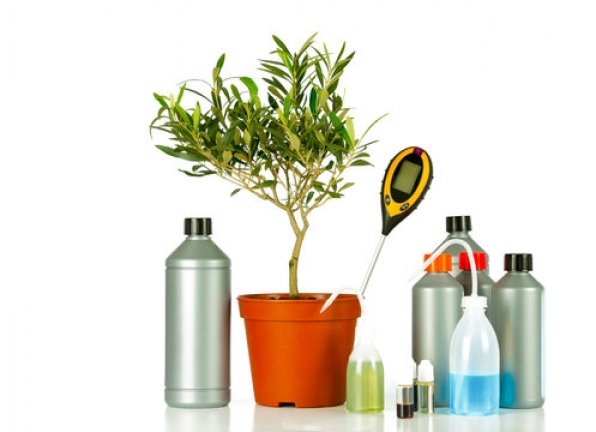
The best way to give your garden more nitrogen depends on what you’re growing, the nutrients in your soil, and how you like to garden. Here are some good ways to do it:
- Use Compost or Organic Stuff: Mix in well-rotted compost or things like kitchen scraps, yard waste, and manure. These break down slowly and give the soil more nitrogen.
- Plant Special Cover Crops: Put in cover crops like clover, peas, or beans. They have a special relationship with bacteria that adds more nitrogen to the soil.
- Pick Fertilizers with Lots of Nitrogen: Choose fertilizers that are high in nitrogen, like blood meal, fish meal, or urea. They give plants a quick boost of nitrogen. Just be sure to use the right amount.
- Try Fish Emulsion or Seaweed Extract: Use liquid fish emulsion or seaweed extract. They’re natural sources of nitrogen. Mix them with water before you put them on your plants.
- Add Alfalfa Meal or Cottonseed Meal: These organic things have a lot of nitrogen. You can mix them into the soil or put them on top of your plants.
- Switch Around Your Crops: Plant different things in different spots each year. Some plants really like nitrogen, so this helps keep the soil full of it.
- Plant a Cover Crop You Can Mix In: Put in a cover crop like crimson clover. You can mix it into the soil, and it gives the plants a natural source of nitrogen as it breaks down.
- Be Careful with Certain Plants: Some plants can stop other plants from growing well. Avoid planting them in places where you want to help your plants get more nitrogen.
- Keep the Microbes in Your Soil Healthy: Having a good balance of tiny organisms in your soil helps break down organic stuff and gives plants more access to nitrogen.
- Check Your Soil and Make Changes: Test your soil regularly to see how many nutrients it has. This will help you know what your plants need and stop you from using too much.
Remember, using too much nitrogen can cause problems for your plants and the environment. Always follow the recommended amounts, and think about what your garden and plants really need.
What Is The Fastest Way To Add Nitrogen Booster To Soil?
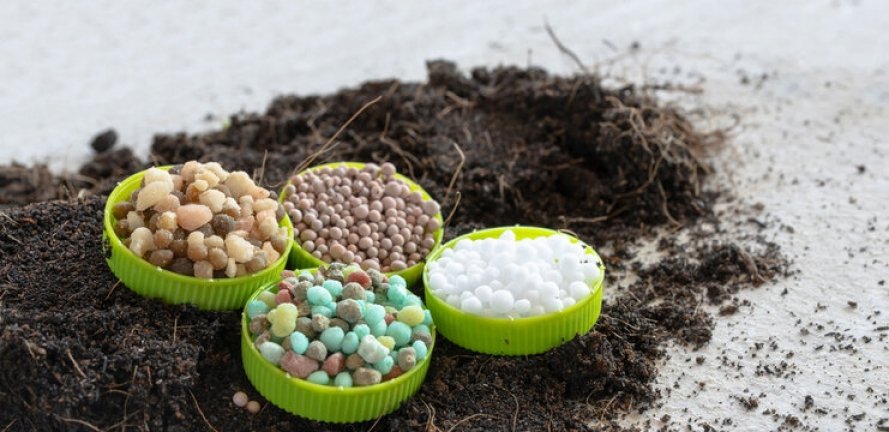
The quickest way to give soil more nitrogen is by using a fast-acting nitrogen fertilizer. Two common types are ammonium nitrate and urea. They have a lot of nitrogen and get to plants fast. These fertilizers dissolve quickly when there’s water in the soil, so plants can use the nitrogen right away.
Here’s how to do it:
- Pick the Right Fertilizer: Choose a fertilizer with lots of nitrogen, like ammonium nitrate (look for numbers like 34-0-0) or urea (look for numbers like 46-0-0).
- Use the Right Amount: Follow the instructions on the fertilizer bag. Spread it evenly over the soil.
- Please give it a Good Drink. After you put on the fertilizer, water the soil well. This helps the fertilizer dissolve and lets the nitrogen go down to where the plant roots can reach it.
- Don’t Use Too Much: Be careful not to use too much fertilizer. Too much nitrogen can cause problems for plants.
- Watch Your Plants: Keep an eye on your plants to see if they start growing better. That means they’re using the extra nitrogen.
Remember, even though fast-acting fertilizers work quickly, they might only give nitrogen to plants for a short time. For a more lasting supply of nutrients, think about using organic matter, slow-release fertilizers, or planting cover crops that add nitrogen. And always be safe when you handle and put on fertilizers, following the rules in your area.
How Do You Know If Your Soil Has Too Much Nitrogen Booster?
You can tell if your soil has too much nitrogen by looking for certain signs and doing some tests. Here are some things to watch for that might mean there’s too much nitrogen:
- Extra Dark Green Leaves: If your plants are growing really fast and the leaves are super dark green, it could be a sign of too much nitrogen. Healthy plants are green, but if they’re too green, it might be a problem.
- Late Blooming or Fruiting: If your plants are making lots of leaves but only a few flowers or fruits, it could be because there’s too much nitrogen. The plant should be focusing more on growing leaves instead of making flowers and fruits.
- Weak Stems and Floppy Growth: If the stems of your plants are long and weak, they might not be able to hold themselves up. This can happen with too much nitrogen.
- More Pests and Diseases: Too much nitrogen can actually attract pests and make it easier for diseases to take hold. It’s like the plants are sending out an invitation to pests.
- Leaves Looking Burned: If you’ve used a fertilizer with a lot of nitrogen and put on too much, the edges of the leaves might turn brown or look scorched.
- Not Getting the Right Nutrients: Too much nitrogen can mess up the balance of other important nutrients that plants need, like potassium and calcium.
- Bad for the Environment: If there’s too much nitrogen in the soil, it can wash away when it rains and cause problems in rivers and lakes. This can be not good for the environment.
To be sure, if your soil has too much nitrogen, it’s a good idea to do a soil test. You can get a kit or ask a professional to do it. They’ll give you specific numbers about how much nitrogen is in your soil. This information will help you make smart choices about how to take care of your plants.
What Fertilizer Is High In Nitrogen Booster?
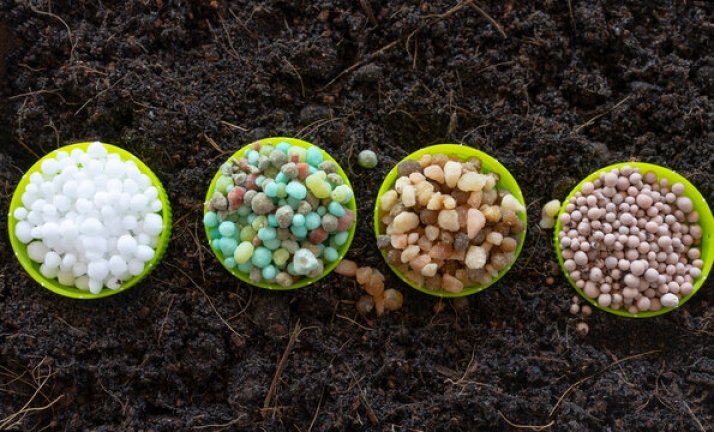
Fertilizers that have lots of nitrogen are often called “nitrogen-rich” fertilizers. They have a higher amount of nitrogen compared to other nutrients like phosphorus and potassium. Here are some common types of these fertilizers:
- Urea (46-0-0): Urea is a man-made nitrogen fertilizer with a really high amount of nitrogen. It’s about 46% nitrogen.
- Ammonium Nitrate (34-0-0): Another man-made fertilizer with a high nitrogen amount. It’s about 34% nitrogen.
- Ammonium Sulfate (21-0-0): This fertilizer has both nitrogen and sulfur. It’s usually around 21% nitrogen.
- Calcium Ammonium Nitrate (CAN): This is a granular fertilizer that has both calcium and nitrogen. It usually gives about 27% nitrogen.
- Blood Meal (12-0-0): A blood meal is a natural fertilizer made from dried animal blood. It has about 12% nitrogen.
- Fish Emulsion (5-1-1): This natural fertilizer is made from leftover fish parts. It has around 5% nitrogen.
- Feather Meal (12-0-0): Feather meal is a natural fertilizer made from treated feathers. It has about 12% nitrogen.
- Fish Meal (9-4-1): This natural fertilizer is made from dried groundfish. It has about 9% nitrogen.
- Soybean Meal (6-1-2): This natural fertilizer is made from ground soybeans. It usually has around 6% nitrogen.
People use these fertilizers to give plants more nitrogen or help them grow more leaves and stems. But it’s important to be careful and not use too much. Using too much can cause problems for the plants. Always follow the recommended amounts so your plants can grow healthy and strong.
What Plants Should I Not Fertilize With Extra Nitrogen Booster?
Some plants don’t do well with too much nitrogen, and it can even be bad for them. Here are some types of plants that usually don’t need a lot of nitrogen or can be harmed by too much:
- Root Vegetables (Carrots, Beets, Radishes): Too much nitrogen can make these plants grow too many leaves and not enough roots, which can result in oddly shaped or small roots.
- Legumes (Peas, Beans, Lentils): These plants have a special ability to get their own nitrogen from the air with the help of certain bacteria. Giving them extra nitrogen can disturb this process.
- Perennial Herbs (Rosemary, Thyme, Lavender): These plants like soil that doesn’t have too many nutrients. Too much nitrogen can make them grow too much and lose some of their flavor.
- Native Wildflowers and Grasses: Many of these plants are used to growing in places with fewer nutrients. Too much nitrogen can upset their natural balance and make it easier for invasive plants to take over.
- Succulents and Cacti: These plants are used to soil with fewer nutrients that drain well. Too much nitrogen can make them grow quickly, but the growth might not be very strong.
- Shrubs and Trees in Established Gardens: Older trees and bushes often have big root systems that can find nutrients from a wide area. They might not get much benefit from extra nitrogen.
- Plants in Soil That Doesn’t Drain Well: If the soil doesn’t drain well, too much nitrogen can cause problems with the nutrients and stress the roots.
- Plants During Dry Times: When it’s very dry, adding extra nitrogen can stress out the plants because they might not be able to take up the nutrients very well.
Remember, there can be exceptions depending on your specific situation, like if your soil isn’t very good or if you have a special kind of plant. Always think about what your plants need and what your soil is like before using fertilizers. Doing a soil test can give you useful information about what nutrients your soil has.
Our Favorite Amendment For Regular Quick Nitrogen Booster:
In our Growfully gardens, we rely on fish emulsion for a quick nitrogen boost. It has about 4-5% nitrogen, but what makes it special is how fast it works. If the conditions are right, it can make weak plants strong again in just a few days. We use fish emulsion every week in our garden routine.
Instantly Add Nitrogen Booster To Your Garden Soil
If you need a quick way to add more nitrogen to your garden soil, try these methods:
- Blood Meal or Alfalfa Meal: These natural additives are rich in nitrogen and provide a rapid nutrient boost to your plants.
- Diluted Human Urine: It might sound surprising, but appropriately diluted urine can swiftly increase nitrogen levels. Just be sure to follow the correct dilution guidelines.
- Manure Tea: By brewing a nutrient-rich tea from well-aged manure, you can offer a speedy source of nitrogen for your plants.
For a gradual, steady increase in nitrogen levels, consider these techniques:
- Compost: Mixing in compost gradually enriches your soil with essential nutrients, including nitrogen.
- Chop-and-Drop Mulch: Using plant material rich in nitrogen as mulch adds nutrients as it breaks down slowly.
- Plant Nitrogen-Fixing Plants: Introducing legumes like peas and beans fosters a natural process that boosts nitrogen levels in your garden.
- Stop Tilling: Avoiding excessive tilling helps maintain soil structure and encourages the accumulation of organic matter, which includes nitrogen.
- Polyculture: Growing a variety of plants together encourages a balanced exchange of nutrients, including nitrogen.
- Mulch: Applying a layer of organic mulch helps regulate soil temperature and moisture, creating a healthy environment for microorganisms that produce nitrogen.
By combining immediate nitrogen-boosting techniques with long-term soil enrichment strategies, you can customize your approach to meet your garden’s specific needs.
Add Nitrogen Booster To Your Garden Soil Indirectly
Looking to make your garden soil richer in nitrogen using indirect techniques? Here are some effective methods:
- Use Plants that Capture Nitrogen: Include plants like peas and beans. They can take in and convert nitrogen from the air, making the soil better over time.
- Plant Cover Crops: During the off-season, sow crops like clover or vetch. As they grow, they naturally boost nitrogen levels in the soil through a process called nitrogen fixation.
- Rotate Your Crops: Switch between plants that need a lot of nitrogen and those that give back to the soil. This helps keep a good balance of nutrients in the soil.
- Bring in Earthworms and Helpful Microorganisms: These small creatures in the soil help move nutrients around, including slowly increasing nitrogen levels.
- Add Natural Material: Mix in well-rotted compost or organic stuff regularly. As they break down, they enrich the soil with important nutrients, including nitrogen.
- Don’t Disturb the Soil Too Much: Avoid digging and turning the soil too often. This helps keep the natural balance of nutrients, letting nitrogen levels go up gradually.
With these methods, you can indirectly boost healthy nitrogen levels in your garden soil. This, in turn, supports robust plant growth and overall garden well-being.
Tips And Tricks Of Using Nitrogen Booster
Here are some easy tips to get the most out of your nitrogen boosters:
- Use the Right Amount: Follow the instructions on the nitrogen booster’s label. This way, you’ll give your plants what they need without overdoing it.
- Time it Right: Apply nitrogen boosters when your plants are growing the most. Usually, this is in the spring and early summer, but it might change depending on your local weather and the plants you have.
- Don’t Use Too Much: While nitrogen is important, using too much can hurt your plants. Use nitrogen boosters thoughtfully and think about what each of your plants likes.
- Use a Mix of Nutrients: Plants need more than just nitrogen. Think about using fertilizers that have a mix of nitrogen, phosphorus, and potassium for all-around plant health.
- Add Natural Stuff: Alongside nitrogen boosters, add things like compost. This gives your plants a steady, long-lasting source of nitrogen as it breaks down.
- Try Slow-Release Types: Slow-release nitrogen boosters give your plants a steady supply of nitrogen over time. This lowers the risk of losing nutrients and makes sure they get what they need.
- Check Your Soil Regularly: Do tests on your soil now and then to see how many nutrients it has. This helps you decide when and how much nitrogen booster to use.
- Skip Fertilizing in Tough Weather: When it’s really dry or raining a lot, hold off on using nitrogen boosters. These conditions can mess with how well plants take in nutrients and might even hurt them.
- Spread Evenly: Make sure you put the nitrogen booster all over your garden. This helps your plants grow evenly and look healthy.
- Use Nitrogen-Fixing Plants: Grow plants like peas or beans alongside your nitrogen boosters. They team up with the boosters to naturally make your soil richer.
Following these tips will help you get the most from your nitrogen boosters. This way, your garden will grow strong and healthy. Always think about what each plant needs and what your soil is like.
Benefits of Using Nitrogen Booster
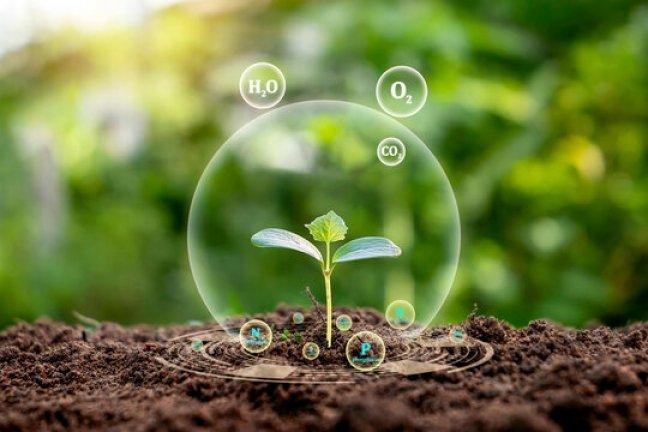
Using a nitrogen booster in your garden has many important benefits for plant health and overall garden productivity. Here are some of the main advantages:
- Encourages Strong, Green Growth: Nitrogen is a vital nutrient that helps plants grow strong and green. It’s essential for making chlorophyll, the green pigment in plants.
- Helps Build Proteins: Nitrogen is a key part of proteins, which are like the building blocks for plants. This is really important for cells and the overall structure of the plant.
- Boosts Photosynthesis: More nitrogen in plants means better photosynthesis. This is how plants turn light into energy. It leads to more energy and more growth.
- Supports Good Root Growth: Having enough nitrogen helps roots grow strong. This helps plants take in water and nutrients from the soil, which keeps them healthy.
- Aids in Moving Nutrients: Nitrogen helps other important nutrients move around inside the plant. This makes sure all parts of the plant get what they need.
- Helps Make Flowers and Fruits: Plants need enough nitrogen to make flowers and fruits. This is super important for plants like tomatoes, peppers, and squash.
- Leads to Better Harvests: When plants get all the nutrients they need, they grow more and give better-quality fruits and vegetables.
- Fixes Nitrogen Problems: In the soil where there isn’t enough natural nitrogen, a nitrogen booster can fix the problem and make sure the nutrients are balanced.
- Works Quickly: Some nitrogen boosters, like urea or fish emulsion, work really fast. They give plants a quick shot of nutrients, and you can see a difference in just a few days.
- Lots of Choices: Nitrogen boosters come in many forms, like organic or synthetic. This means you can choose the best one for your plants or how you like to garden.
By using a nitrogen booster in your garden, you can make sure your plants get all the important nutrients they need to grow strong and healthy.
Types of Nitrogen Boosters & Which Number Is Nitrogen In A Fertilizer?
Different Types of Nitrogen Sources for Your Garden:
- Organic Nitrogen Boosters:
- Compost: Compost is made by breaking down kitchen scraps, yard waste, and manure. It releases nitrogen slowly. The exact nitrogen content in compost can vary widely, so it’s hard to give an exact measurement.
- Manure: Cow, chicken, or horse manure is rich in nitrogen. It should be well-aged or composted to avoid harming plants. The nitrogen, phosphorus, and potassium (NPK) content of manure can vary depending on factors like the type of animal and the composting process.
- Cover Crops (Legumes): Plants like clover, peas, and beans have a special ability to take nitrogen from the air with the help of bacteria. They release nitrogen when mixed into the soil. The exact nitrogen content can vary, but it’s generally in the range of 2-5%.
- Blood Meal: This is dried, powdered animal blood, and it’s a strong and quick source of nitrogen. It has a high nitrogen content (12-0-0), making it a powerful fertilizer for plants.
- Synthetic Nitrogen Boosters:
- Urea: Urea is a common synthetic fertilizer with a very high nitrogen content (46-0-0). It provides a quick boost of nitrogen, which is crucial for plant growth.
- Ammonium Nitrate: This is a water-soluble fertilizer with a high nitrogen content (34-0-0). It’s known for its quick action and is good for plants that need an immediate nitrogen supply.
- Ammonium Sulfate: This fertilizer contains both nitrogen and sulfur. It’s fast-acting, providing a quick source of nitrogen for plants in need.
- Calcium Ammonium Nitrate (CAN): CAN is a granular fertilizer that contains both calcium and nitrogen. It’s a rich source of nitrogen (about 27%) and provides essential calcium for strong plant structures.
- Ammonium Phosphate: This fertilizer supplies both nitrogen and phosphorus. The nitrogen content can vary, but it’s usually between 10% and 12%. Phosphorus content ranges from 45% to 52%, making it useful for root development and overall plant health.
Using these different types of nitrogen sources can help ensure your plants get the nutrients they need to grow strong and healthy.
- Liquid Nitrogen Boosters:
- Fish Juice for Plants: Fish juice helps plants grow. Mix it with water before using.
- Seaweed Extract for Plants: Seaweed extract is good for plants. It has a little bit of food for them.
- Special Bacteria for Plants: Some bacteria help plants get food from the air.
- Plant Foods from Nature:
- Seaweed food is good for plants. It has food and vitamins.
- Alfalfa food has many kinds of food for plants.
- Neem seed food gives plants food and other good things.
- Corn gluten food is strong and has lots of plant food.
- Fruit vinegar has natural plant food inside.
- Animal Foods for Plants:
- Feather food comes from feathers and is strong food for plants.
- Blood food is strong food made from animal blood.
- Fish food has food and other good things from fish.
- Food from Home for Plants:
- Compost is made from old plant and food bits.
- Grass bits, food scraps, and things like coffee can also help plants.
- Plants that Give Food to Soil:
- Some special plants can give the soil food. They are Crimson Clover, Iron Clay Pea, Austrian Winter Pea, Marvel Chickpea, and Fava Beans.
These different foods can help plants grow well. Always use the right amount for healthy plants!
Conclusion
Using nitrogen boosters is important for having healthy and productive gardens. These special additions, whether natural or made in a lab, are great at giving plants the nitrogen they need. When plants have enough nitrogen, they grow better, have lots of leaves, and give a big harvest.
But it’s super important to use the right amount. You have to understand what your garden likes. Also, it’s good to use other plant foods and earth-friendly gardening tricks to make your garden even better.
Nitrogen boosters are like a special ingredient that makes your garden amazing. When you know how to use them, you can make a garden that’s full of beautiful and useful plants. Each leaf and flower shows how well you’re taking care of your garden.

